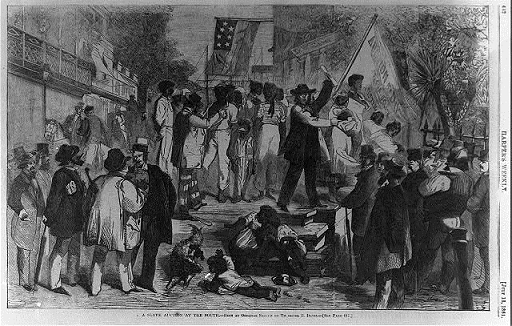| << Chapter < Page | Chapter >> Page > |
Historians studying slavery in the Americas and the world have often lamented, with good cause, the difficulty of finding primary sources created by enslaved persons. Instead, historians are often forced to rely upon primary sources that provide a ‘from the top down’ view of slavery. Economic accounts kept by slaveowners is one example of a source base that provides information regarding the lives of enslaved persons, but the accounts have to be approached carefully due to the inherent biases contained within the writings. Two bills of slave sales, available online as part of the ‘Our Americas’ Archive Partnership (a digital collaboration on the hemispheric Americas) and physically housed in Rice University’s Woodson Research Center, serve as valuable entrypoints into classroom discussions of the local economic processes of slave systems and slave family life.
Bill of sale, 1847

This module encourages educators to incorporate these two documentary items within classroom lessons focusing on early to mid nineteenth-century slave life. At the start of the lesson, it might prove useful for a teacher to pass around photocopies, or project the images, of the bills of sale. Students will immediately be struck by the stark simplicity of the documents. One of the bills relates to the sale of “George” in 1847. George was 30 years old and sold for $505. The other bill, dated from 1811, notes the sale of a woman named "Milly&her child” for $330. At this time, it would be important to stress the sensitivity with which we must approach these documents. Educators should convey to their students at the outset that these writings represented the practice of selling human beings and, as such, the conversation has to proceed with a level of respect for the suffering of George, Milly, her child, and the millions of others who endured similar sales.
A slave auction in the south

The bills of sale can also be placed within the larger international framework of the economics of slave systems. Sales of slaves occurred on a variety of scales, from entire shiploads of individuals to a single slave being sold. In addition, any location that perpetuated a slave system also had built in mechanisms for slave sales. Students could benefit from a survey of international slave systems using, for example, the study of the Cuban slave market completed by scholars Bergrad, García, and del Carmen (1995). Their work also allows for a classroom exercise involving students in groups, or as individuals, being assigned a particular table from the study, interpreting the data table, and presenting their findings to the class. The authors provide a wide variety of tables including information on: sex, origin, age, place of sale, national origins, and average prices on specific groups of laborers i.e. domestics, drivers, field hands.

Notification Switch
Would you like to follow the 'Slavery in the americas' conversation and receive update notifications?